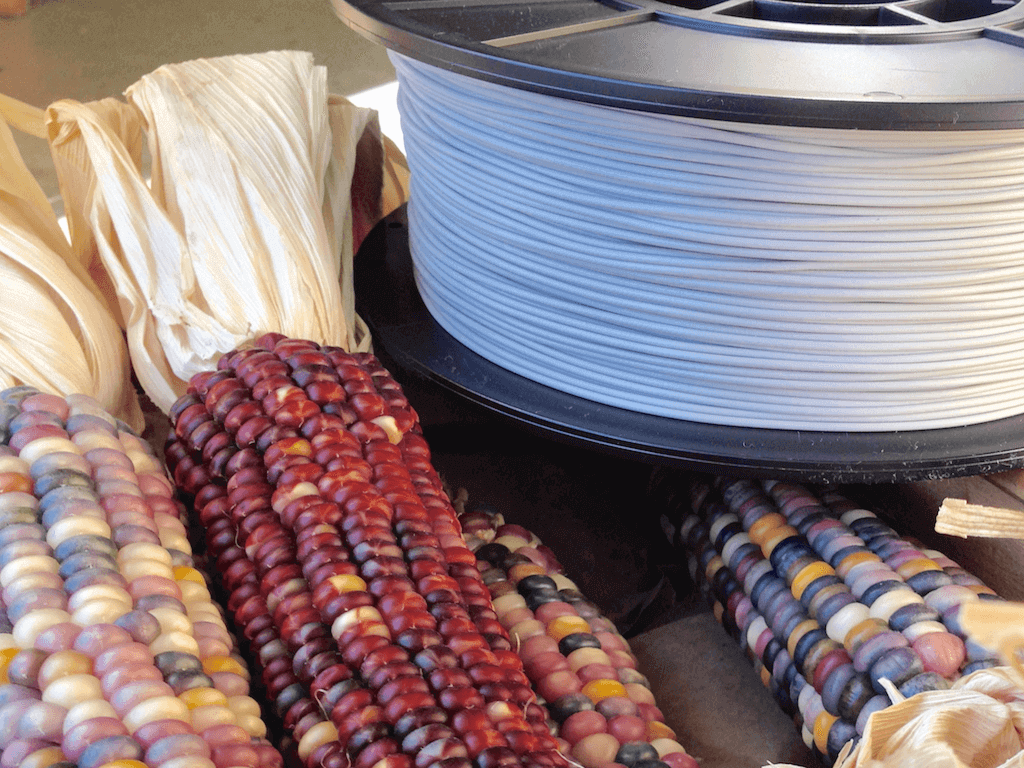What do you know now that you didn’t know a year ago? An entrepreneur driving the market in eco-friendly 3D printing filament shares her learning.
Guest Post: This article originally appeared on the Clean Strands blog and was written by Rachel Spieczny. Text and images reproduced with the author’s permission.
This morning, Quartz Daily News asked their readers: What do you know now that you didn’t know a year ago? Having taken a deep dive into 3D printing materials this year, I thought I’d share my reply to Quartz with you:
This time last year, I had just received my first 3D printer, a Zim from Paris-based 3D printing start-up, Zeepro (whom I had helped to raise funds on Kickstarter). My kids and I set up our 3D printer in the kitchen, loaded it up with ABS 3D printing filament, chose a design online, and hit ‘print.’ Within minutes however, our 3D printer began to emit the worst smell, I had to run around the house opening all of the windows and doors, and I began to wonder what this ABS stuff was made of. Little did I know that this simple question would take me on a year long journey that has culminated in the recent launch of Clean Strands, the first online marketplace for eco-friendly 3D printing filaments.
Back in January 2015, I toured CES (Consumer Electronics Show) with this newly formed question about 3D printing filaments and safety on my mind. At CES, I saw 3D printing filaments in a variety of colors, and read some literature on filament strength and quality. But there was little to no mention of the materials being used to make 3D printing filaments, or of the health and environmental effects when filaments are heated.
So, in Spring 2015, I launched a Kickstarter campaign to raise funds for the first in-depth testing of fumes released from ABS and PLA filaments during 3D printing. My goal was to start small by testing for the presence and concentration of a few specific chemicals, like styrene and hydrogen cyanide. If successful, I planned to transform this Kickstarter project from a one time project into a de facto business by issuing paid and non-paid access to test results; updating the results in a timely and growing series of reports; providing incentive and exposure — via the Clean Strands Seal of Approval — to qualifying filament manufacturers and other 3D printing OEMs and related suppliers; and over time, creating a unique and valuable emerging industry brand positioned for future growth.
The Clean Strands Kickstarter campaign did not reach its funding goal. However, the impetus behind the project received widespread support across the entire 3D printing industry, and it coincided with a boom this summer/fall in clean tech companies releasing eco-friendly 3D printing filaments. Bringing all of these emerging filaments together in one place seemed to be the logical next step, so in November 2015, the Clean Strands marketplace went live.
As we enter 2016, the future of non-toxic sustainable filaments for 3D printing looks fantastic! The American Association for Aerosol Research (AAAR) had the highest number of 3D printing submissions ever. Established certification organizations like UL have launched global initiatives to define safe use for filaments. There are now trade shows and conferences dedicated exclusively to 3D printing filaments. And the number and variety of eco-friendly filaments coming to market each month is growing exponentially.
I can’t predict where Clean Strands will be next December, but my hope is that eco-friendly filaments will be the standard in all homes, schools and businesses; that regulations will be in place restricting the use of specific harmful chemicals; and that research for new sustainable materials used to manufacture filaments will be encouraged and supported. Whether its beer, coffee, algae or wood based filaments, 2016 will definitely be interesting!
License: The text of "3D Printing: What I know now that I didn’t know a year ago…" by All3DP is licensed under a Creative Commons Attribution 4.0 International License.
